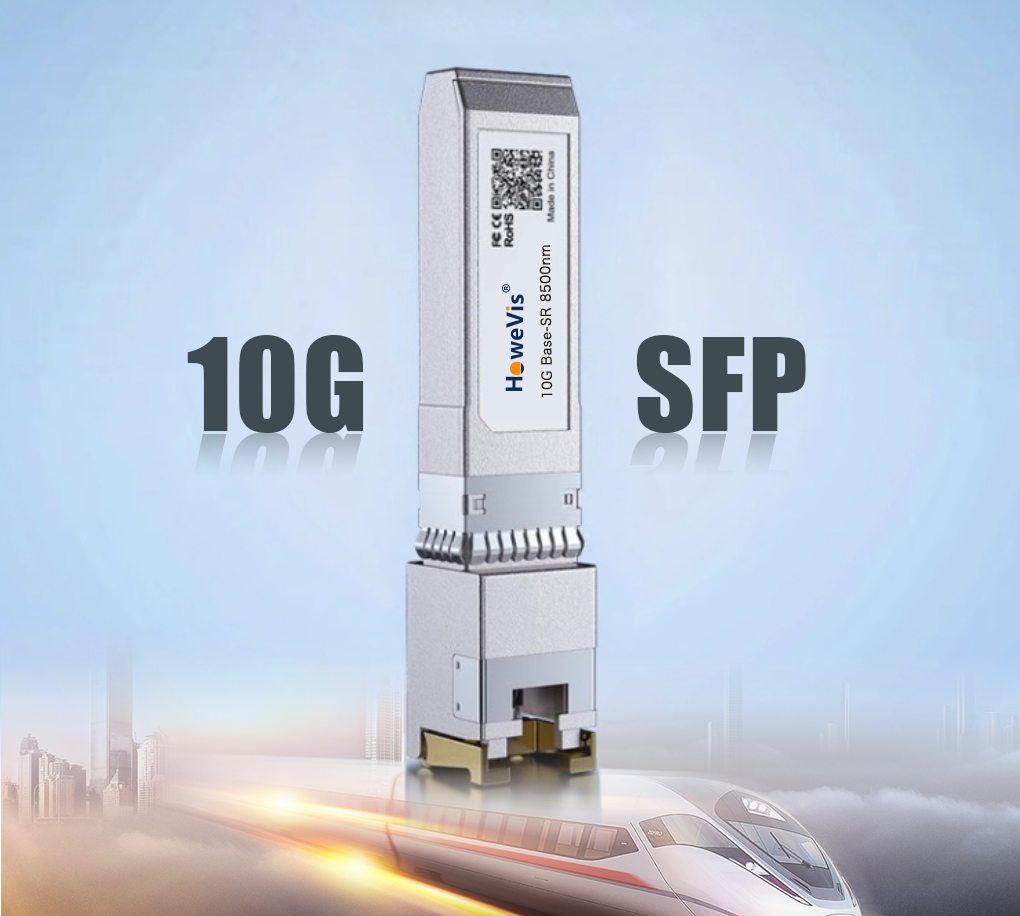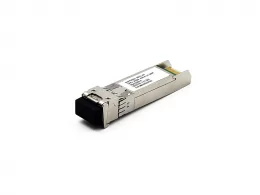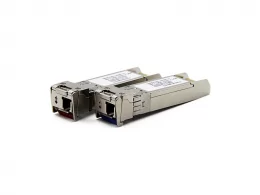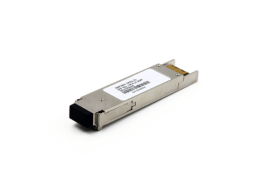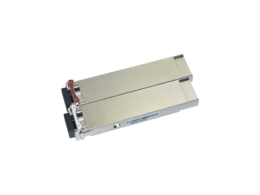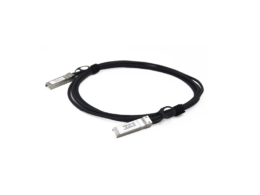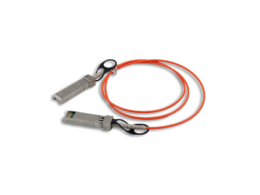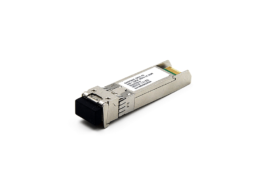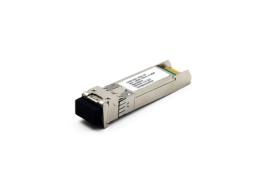Gigabit Ethernet has revolutionized the technology world. Previously, we had different systems of wireless access points and even Ethernet technology, but we hardly reached the 1 gigabyte per second data speed. At the data center, we must continually maintain high data speeds. Now, the question is, what will provide that high data speed?
The Institute of Electrical and Electronics Engineering introduced 10GbE with different varieties to transfer data over longer distances and communicate with data in the local territory. We consider optical fibers that enable fast data transmission over longer distances. This has curtailed data and power consumption requirements at the data centers.
This article will explore the 10G SFP+ to know precisely what it is.
Suggested Reading: How many Mbps is 10 Gigabit Ethernet?
What Is 10G SFP+? A Complete 2025 Guide to 10GbE Transceivers
You may have heard of different terminologies, such as 10Gbase—T, 10G SFP, and 10G SFP+. These are all 10 gigabit Ethernet systems, but they have different functionalities and ensure various network performances.
Before exploring the 10G SFP+, we must know what 10G SFP is and how it differs from the 10G SFP+.
What is SFP?
SFP refers to the small form pluggable factor. In actuality, it is a form of 10 Ethernet Transceiver that enables both:
- Data Communication
- Telecommunications
With these features, you can manage high data speed. The SFP works with small form factors (SFF) connectors that ensure high data speeds and physical compactness.
So, what is the 10G SFP+, then?
In most cases, 10G SFP+ is an enhanced version of the SFP transceivers that supports the high data speeds of 10 Gbps or more. Manufacturers reuse the existing designs of the SFP to operate the SFP+.
How does the 10G SFP+ work?
10G SFP is nothing new in technology except for the enhanced features of 10G Ethernet. It offers many different features.
Since it is an Ethernet technology, you must know many factors about the 10G SFP+ before working on this 10G network.
- You can consider it in both forms— electro-optic and optical fiber.
- LAN has the same range as the 10G Ethernet of 100 meters.
So, you can expect better performances from the technology.
Suggested Reading: Is 10 Gigabit Ethernet worth it for home use?
2 Modules of the 10G SFP+ Transceivers
SFP+ 10G has different modules depending on the use. For example, if you consider it for use in the Local area network, it will be the copper transceiver; you should consider it. For longer transmissions, you would need fiber optics.
We will discuss both modules in detail and understand multiple types of modules to explore Optical transceivers.
10GBASE-T SFP+ Copper Module
The 10GBase-T copper module is a simple type designed to transfer data over the Ethernet ports. Ethernet would be the unshielded twisted pairs.
The 10Gbase-T Copper module has the same range of 100 meters. Sometimes, it even has a lower range of 80 or 50 meters. This is because it doesn’t have enough power to transmit the full signals to 100 meters. It works with Cat5, Cat6, or even Cat7 Ethernet cables and transfers the power and data over these wires.
The 10Gbase-T copper module is backward compatible and thus offers more options while working with 1 Gbps or lower data speed.
10GBASE SFP+ Fiber Module
Have you heard of Optical fibers? They are premium choices for data transmission over long distances. This is where we consider the 10GBase SFP+ transceivers to be used to send the data to longer distances.
You might also describe the Single mode and multimode optic fibers if you know optical fiber.
So, there are two fundamental types of optical fiber modules.
- Single-mode fiber
- Multimode fiber
Let’s dive deep into single-mode and multimode optical transceivers.
Single Mode SFP+ Transceiver
A single-mode SFP+ transceiver will work only with the single-mode optical fiber and transmit the light in one mode.
In an optical fiber, the ray of light strikes the ends of the fiber and then moves ahead to reach the far end. The core size is less, and it provides high bandwidth support.
Still, there are three types of single-mode SFP+ transceivers for transmissions that are longer distances. These are:
10GBase-LR Single mode SFP+
10GBase-LR Singlemode SFP+ is a long-range optical transceiver with the following features.
- Engineers implement it with the distributed feedback laser (DFB).
- The nominal wavelength of the light signals in the single-mode optical transceiver is 1310 nanometers.
- The maximum range of the singles is 10 kilometers.
It can transmit the signals and optimize the data connection in the given range due to higher bandwidth support.
10GBase-ER Single mode SFP+
10Gbase-ER is an extended-range module that is even better than the long-range module for many reasons. Here are its features.
- Externally modulated laser (EML) is the fundamental protocol for its implementation.
- The wavelength of light in an extended-range optical transceiver is more than 1550 nanometers.
- Since we call it an extended-range transceiver, it can amplify the singles to four times the distance we get from the LR. Its maximum transmission distance is 4000 meters or 4 kilometers.
It has higher bandwidth support than the LR module to facilitate long-distance transmission.
10GBase-ZR Single mode SFP+
When you consider the 10GBase-ZR, it provides an even higher range than you can expect. It provides the following fundamental features for your network.
- The wavelength of the light is 1550 nanometers, like the extended range.
- The transceiver can amplify the signals more than the extended range. It offers a higher range of 80 kilometers.
If you want to travel long distances, consider this option.
Multimode SFP+ Transceiver
Do you know about multimode optical fiber? The Multimode transceiver carries multiple light modes and provides refraction and reflection to the given light method. The standard mode of light is transverse and longitudinal.
Multimode transceivers are operative for a short distance transmission. Here are two types of multimode SFP+ transceivers.
10GBASE-SR Multimode SFP+
SR refers to the Short range. This multimode transceiver is perfect for short-distance transmission. Its signal spread has a maximum range of 300 meters, and it performs all the tasks at lower costs.
10GBASE-LRM MMF/SMF SFP+
These transceivers have a range less than the Short range of multimode transceivers. They can support maximum lengths up to 220 meters and, in some cases, 300 meters.
5 Reasons Why 10G SFP+ Transceiver is your choice
Before choosing the 10G SFP+, you must consider multiple points. Here are some questions to answer.
- What are your network requirements?
- What do you need for your SFP+ transceiver?
- Do you want to ensure low latency?
Depending on these facts, I have listed five significant reasons for considering the 10G SFP+ transceiver.
Size and dimensions
The astonishing feature of the SFP+ transceivers is their small size and higher efficiency. They are half the size of old receivers and contain a higher port density per switch.
According to the latest versions of the 10G SFP+, a switch can contain 48 SFP+ ports in one rack unit configuration. Such a small size but higher power make it a favorite among users worldwide.
Maximum link length
Two facts determine the maximum link length:
- The copper wires
- Fiber Optic System
You can maximally send the signals to 100 meters in the copper wires. It is precisely a problem for distance transmission when you need to expand your signal range. It is where SFP+ comes into action. With single-mode and multiple-mode SFP+ systems, you can transmit signals to 80 kilometers, making it a powerful option for data centers and enterprises.
Operability with single-mode and multimode fiber optic cable
With the 10G SFP+, you are not limited to single-mode fiber or copper wires. Instead, you can expand your signal range and work with this technology using multimode fibers.
Long-range and Short-range optical fibers can meet your business requirements.
Protocol Independence
10G SFP+ works without relying on the protocols. Do you know how? It is a physical network device that changes the signals from electrical to optics for better transmission through optical fibers. While protocols mainly play a part in data packet analysis and security.
Therefore, you can operate it without the essential requirements of the different internet protocols.
Backward compatibility
Transceivers are backward compatible. Depending on your network requirements, they can perfectly operate with Fast Ethernet or Gigabit Ethernet. So, you don’t have to worry about the previous versions of your technology. You can utilize this technology whether you have the latest devices or not.
Final Thoughts:
Do you want to purchase the SFP+ transceivers? Then, what are you waiting for? HoweVision Professional has everything you need for your Ethernet technology. Check out our collection of transceivers and let us know what you want to buy. Send us a message or call us to get what you need for your business.
